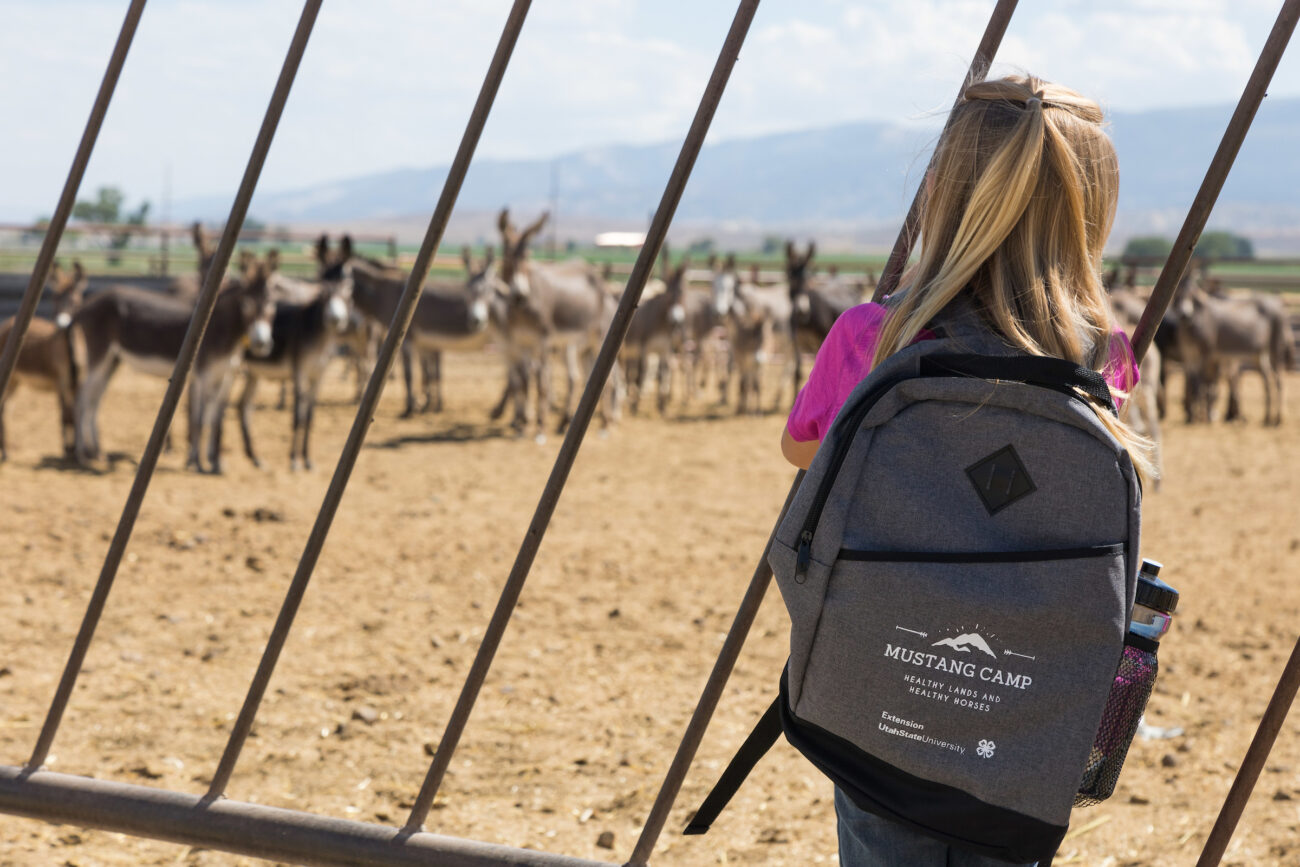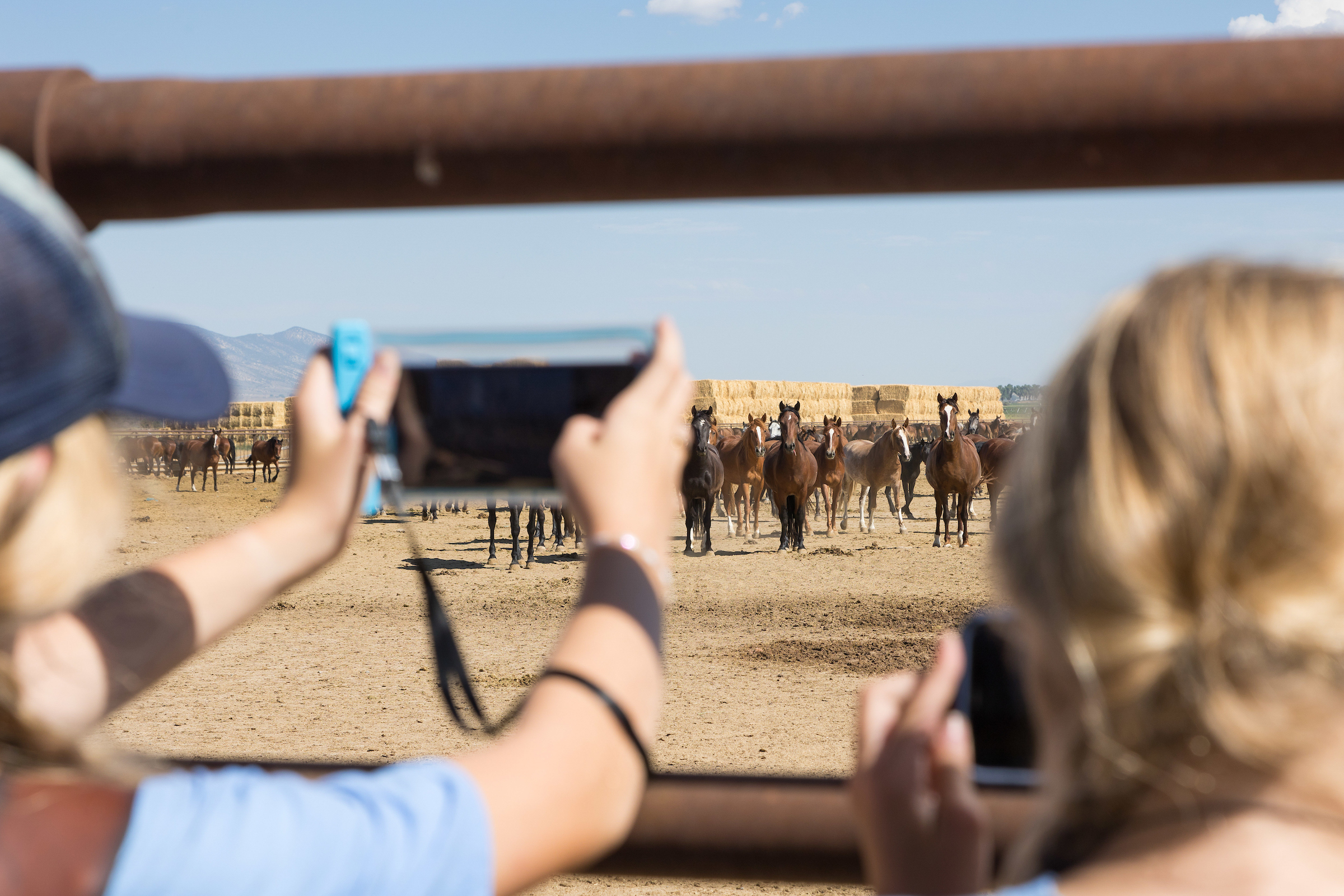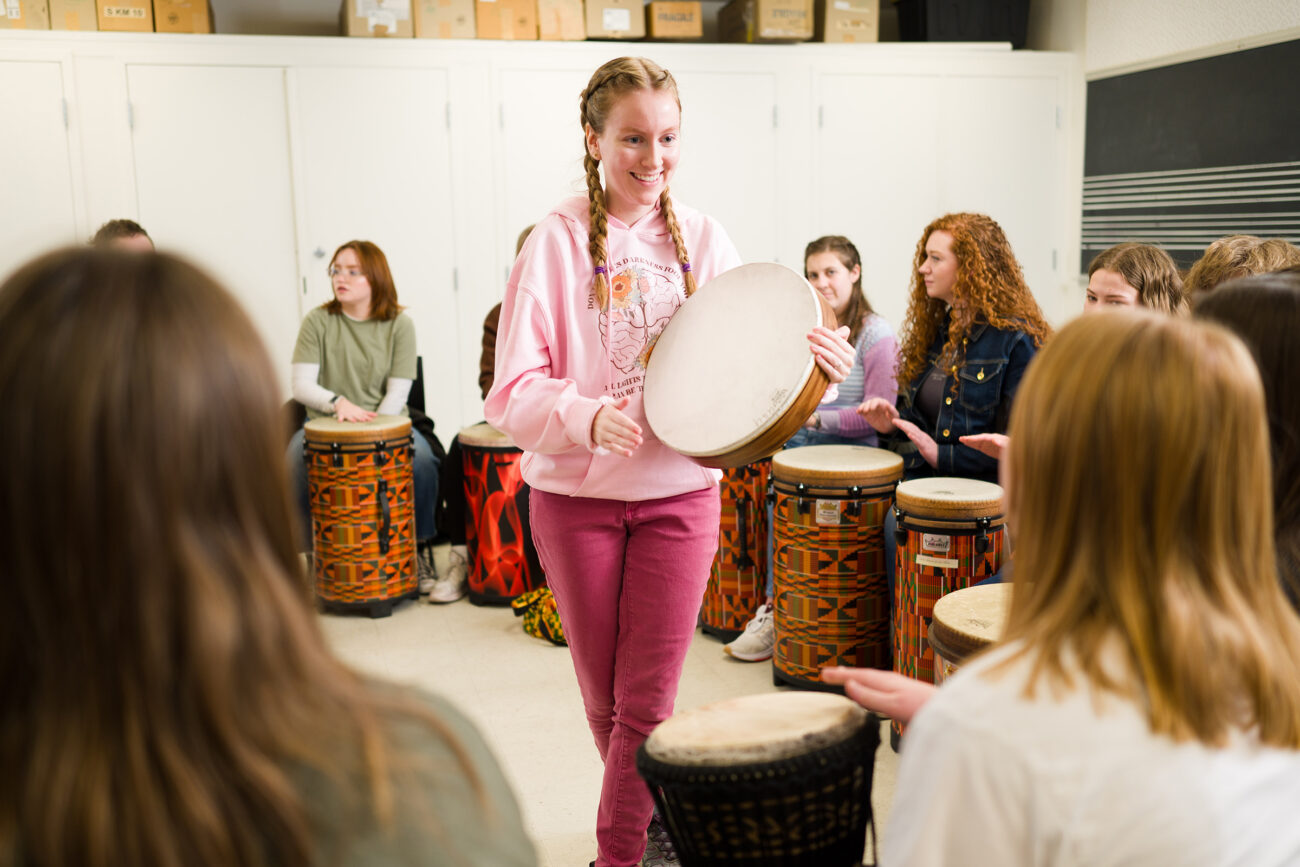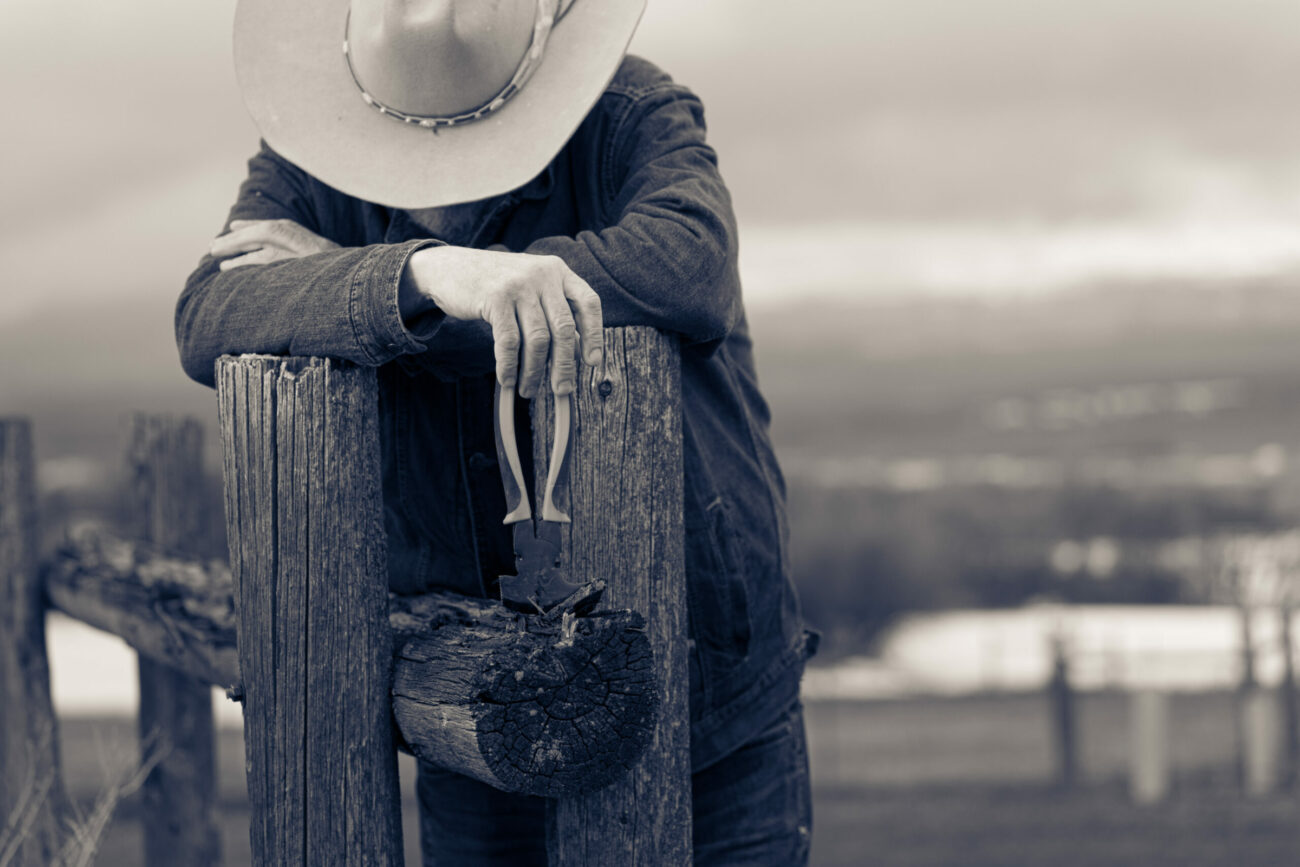Youth Movement: 4-H Extension’s Mustang Camp Awarded Large BLM Grant

Due to its success in Utah, the BLM is hoping to expand the youth education program throughout the Western United States
By Timothy R. Olsen ’09, ’18 M.B.A.
The wild mustang is synonymous with the idyllic picture of the American West. Red rock canyons, sage covered hills, and cowboys on the wild frontier are embedded in our country’s very persona. Their iconography perseveres today as the mascot for sports teams at every level, and it even adorns one of Ford Motor Company’s most iconic cars.
However, despite their prominence in both our collective past and present, it comes as a surprise to many that horses aren’t native here.
In Utah it’s estimated there are nearly 4,000 wild horses and burros living in 22 herds — part of an estimated 83,000 animals living throughout the West. Unchecked, these horses and burros have the ability to double in population every four years. What will likely not come as a surprise, however, is the management of these animals is a hotly debated topic.
“I think one of the biggest things is just the reality of the horse situation,” says Eric Thacker, range management specialist for the USU Extension. “I think, if people are disconnected from that issue, it’s easy to look at it from the outside and just assume … I mean everybody likes horses. I like horses.
“Having horses is something that’s an important part of our heritage in the West. But I think just placing some reality around the need to manage horses … and how we do that is very important — especially in the relatively fragile ecosystems where they live.”
Building a better understanding of the reality of the wild horse and burro situation has long been a goal of Thacker and Jessie Hadfield, a professional practice Extension assistant professor who is also the state 4-H horse and livestock specialist. Those two are part of a nationwide group called the Free Roaming Equids and Ecosystem Sustainability network, or FREES, which largely works towards the goal of “healthy humans and wild horses on healthy Western landscapes.”
As the chair of the youth committee for FREES, Hadfield was tasked to come up with a way to educate youth on what she calls a “wicked problem.” The brainstorming session that followed that directive — along with the help of a $30,000 mini-grant from USU Extension — ultimately led to the creation of the Mustang Camp. The camp is an opportunity for youth to view and learn about Utah’s wild horses and burros on the range, as well as at the Bureau of Land Management’s holding facility in Delta.

Having recently finished up the third year of camp this past summer, the program’s seen roughly 100 kids come through in total.
“I think the most impactful thing they learned is we care about the wild horses, but the wild horses are not the only animals out there that deserve our respect, care, and stewardship,” Hadfield says. “We take them out onto the range and show them this is not an issue of the rancher versus the wild horse. This is the fox and the hawks and a variety of wildlife out there that are being impacted by the mismanagement of the wild horses. Every single kid comes back and they’re like, ‘What can we do to help to manage the land better?’”
As part of the camps, Steve Price, the director of USU’s Carbon County Extension office, helps guide the kids through various activities and challenges them to lead problem-solving discussions. They use range management equipment to clip grass and other plants to estimate available feed, review available water sources, go over growth rates and various other factors, and then plug all of that information into basic probability models. As they do, the seriousness and complexity of the situation quickly becomes evident.
“You can tell that once they start getting the science, they get to see everything, we’re taking them through the activities, that they’re thinking less at an emotional level,” Price says. “You can tell they’re really trying to think critically about what is the long-term solution — and they come up with great ideas. But there’s a lot of politics around this stuff, too, so we also have to consider those human dimensions.”
Thacker says he remembers a couple years ago some kids sent a text to their dad telling him to bring the trailer when he came to pick them up because they wanted to adopt a couple of the burros. Similar stories have cropped up each year of the camp, and that impact isn’t going unnoticed.
This past October at the FREES Summit in St. George, Hadfield presented data the team has gathered through surveys during the first two years of the camp. After the presentation, she says she was approached by a couple of people involved with the BLM at the national level letting her know the Bureau had some funding they thought her Mustang Camp program would be a great fit for.
Hadfield and the group applied for, and recently received, a grant of nearly $900,000 “to not only continue this program in Utah, but to spread it across the nation,” she says. “Basically, they want us to eventually have this same camp being run in every state that has wild horses.”
Despite all the noise surrounding wild horse and burro management, Kalen Taylor — an assistant agriculture professor with the Millard County Extension office — says the goal is really to give the kids a science-based understanding of the data so they can make an informed decision.

According to BLM estimates, Utah’s appropriate management level is a population of slightly less than 2,000 animals. With the current population estimates, that puts the state at nearly double the desired level. Due to current legislation, though, no animals are being gathered this year except in emergency cases due to things such as extreme drought or fire. Those conditions are unlikely in Utah this year.
“Most of these kids that are coming through have never seen a horse on the range before,” explains Taylor, who is also one of the core members that organizes and runs the camp every year. “About 90% of them when they come in say that they think the only management practice that needs to be adopted is nothing basically. They think that [the animals] should just manage themselves and everything will be fine. But as we observe forces on the range, talk about body conditions for how much feed they need, and how quickly they reproduce, the kids really change their tune quickly.”
Now, due to the success of the camp and with the help of the BLM’s grant funding, the Mustang Camp is looking to grow. Not only in Utah, but into every state in the West that is home to wild horses and burros.
Hadfield says the goal is to add 10 additional camps over the next five years throughout the West. Along with that, they want to continue expanding the camp in Utah by adding multiple day camp options to go along with the current overnight offering. She says they’d like to limit each camp to roughly 20 participants, because much more than that and they become less effective.
Tammy Pearson is the Beaver County commissioner, a rancher, and sits on the national BLM Wild Horse and Advisory Board. She’s attended and spoken at every camp and is a big fan of what the camp is trying to accomplish.
“Utah State has always been very innovative. They’re not shy about tackling hard issues,” she says. “And if you tackle hard issues in the right way, you find solutions. … They’re thinking outside the box. We can’t continue to do the same thing that we’ve done.”
Despite the success of the camp, there’s a lot of work ahead — both in rolling out the Mustang Camp to other states and in addressing the wild horse and burro issue in general. Taylor says, with a tone of resigned determination, this situation is unlikely to be resolved during his lifetime. He and the others only hope their work can help to better prepare future generations to deal with the task.
“Getting to see those kids work out the science and practice with us, and then getting to take them out on range and see those herds stampeding and just watching them — I mean, it takes my breath away, and I’ve seen that a bunch,” Price says. “No matter what happens, that is just a super cool experience for those kids. I love wild horses, I love horses in general, and that’s a cool part of our heritage to be able to show kids that would never in their life get a chance to do that. It’s an honor to be able to do that for people.”





